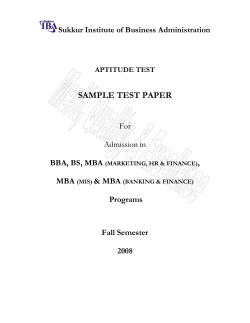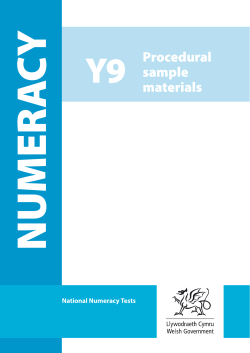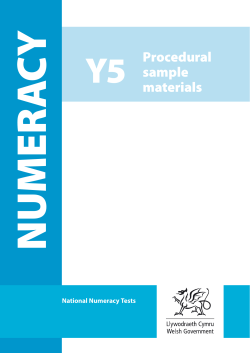
Grade Marking Briefing for Students (Academic Handbook
Title: Grade Marking Briefing for Students Document Type: Guideline Location: Academic Handbook Section 4O Version: 1.3 Publication date: August 2013 Author: Academic Services Approved by: Dean, Academic Services Last updated: March 2015 1 Academic Services March 2015 Grades also match with the Generic Grading Criteria that you use in your assessments. If you get a B1 in one assignment, you can use the grading criteria to show you what to improve to get an A4 in your next assignment. What do I have to do? You don’t have to do anything. All your assessments will be returned to you with a grade, apart from exams and some assignments that have clear right or wrong answers which will still be in numbers. 4O: Grade Marking Briefing for Students Staff in the faculty offices will change the grade to a number which will be recorded in the Student Records System. The following table shows which grade is linked to which numerical equivalent. What is Grade Marking You’ll get the results of your units back as a number, and your final degree award will be calculated from numbers. Grade Marking is Southampton Solent University’s assessment marking system. For most of your assessments you’ll get a grade (e.g. B2) rather than a number (e.g. 65) when your work is returned to you. The exceptions are assessment where you can either be right or wrong, such as some multiple choice tests, where you will still be given a mark, and exams. FAQs How do the grades for each element get combined to give a unit mark? Each grade corresponds to a numerical equivalent. The numerical equivalent for each assessed element will be given its due weighting and combined to give an overall mark for the unit. Why is Grade Marking used at Solent Will marks for those assessments which require the full numerical scale i.e. those where answers are either right or wrong, be converted to a grade, and then to its numerical equivalent? No, these will be recorded as the true mark achieved. Many universities use a marking system based on giving marks on a scale of 0-100. However, research has shown that most tutors only mark between 35-75%, and that actually, marks are only reliable to 2-3%. Therefore having fewer marking points, spread more widely, means that marking is fairer, and that your best and worst marks will be better represented in your final degree mark. How do marks from Grade Marking and the full numerical scale get combined? The numbers from both scales (with due weighting for each element) are added 2 Academic Services March 2015 together to produce an overall mark for the unit. Where do I get further information? You can find out more about Grade Marking from the Portal and the myCourse page called Grade Marking 4 Students. You can ask your lecturers, Faculty Admin staff, Student Support Network Officers in your Faculty, and you can also send any questions on Grade Marking to grade.marking@solent.ac.uk 3 Academic Services March 2015 Generic Grading Criteria Marking Band* Grade Mark Numeric Equivalent A1 100 A2 92 A3 83 A4 74 B1 68 B2 65 B3 62 C1 58 C2 55 C3 52 D1 48 D2 45 D3 42 F1 35 F2 20 F3 15 Submitted S 1 Non-submission N 0 Exceptional in most / all aspects, substantially exceeding expectations for this level Excellent quality, exceeding expectations for this level in many aspects Meets all the intended learning outcomes and exceeds the threshold expectations for this level in several of them Meets all the intended learning outcomes and exceeds the threshold expectations for this level in some of them Meets all the intended learning outcomes at, but rarely exceeding the threshold expectations for this level Fails to meet all of the intended learning outcomes and is marginally inadequate for this level Fails to meet all of the intended learning outcomes and is inadequate for this level *For the Generic Grading Descriptors broken down by level and skill see: http://docman.solent.ac.uk/DocMan8/rns?RNS=ASQS/AH/1234573065 4 Academic Services March 2015 5 Academic Services March 2015
© Copyright 2025














